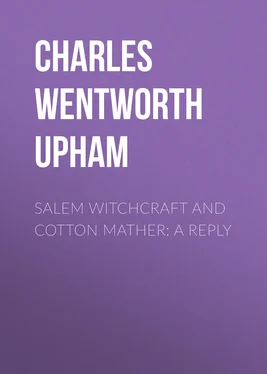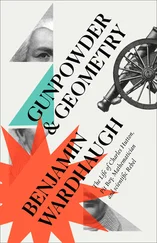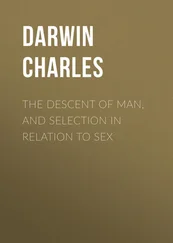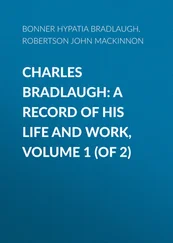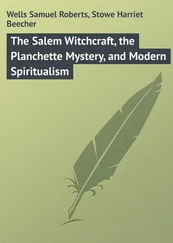Charles Wentworth Upham - Salem Witchcraft and Cotton Mather - A Reply
Здесь есть возможность читать онлайн «Charles Wentworth Upham - Salem Witchcraft and Cotton Mather - A Reply» — ознакомительный отрывок электронной книги совершенно бесплатно, а после прочтения отрывка купить полную версию. В некоторых случаях можно слушать аудио, скачать через торрент в формате fb2 и присутствует краткое содержание. Жанр: foreign_prose, История, foreign_edu, foreign_antique, на английском языке. Описание произведения, (предисловие) а так же отзывы посетителей доступны на портале библиотеки ЛибКат.
- Название:Salem Witchcraft and Cotton Mather: A Reply
- Автор:
- Жанр:
- Год:неизвестен
- ISBN:нет данных
- Рейтинг книги:3 / 5. Голосов: 1
-
Избранное:Добавить в избранное
- Отзывы:
-
Ваша оценка:
- 60
- 1
- 2
- 3
- 4
- 5
Salem Witchcraft and Cotton Mather: A Reply: краткое содержание, описание и аннотация
Предлагаем к чтению аннотацию, описание, краткое содержание или предисловие (зависит от того, что написал сам автор книги «Salem Witchcraft and Cotton Mather: A Reply»). Если вы не нашли необходимую информацию о книге — напишите в комментариях, мы постараемся отыскать её.
Salem Witchcraft and Cotton Mather: A Reply — читать онлайн ознакомительный отрывок
Ниже представлен текст книги, разбитый по страницам. Система сохранения места последней прочитанной страницы, позволяет с удобством читать онлайн бесплатно книгу «Salem Witchcraft and Cotton Mather: A Reply», без необходимости каждый раз заново искать на чём Вы остановились. Поставьте закладку, и сможете в любой момент перейти на страницу, на которой закончили чтение.
Интервал:
Закладка:
It thus appears that the opinion was entertained, in England and this country, that the notoriety given to the case of the Goodwin children, especially by Mather's printed account of it, had an efficient influence in bringing on the "tragical scene," shortly afterwards exhibited at Salem. This opinion is shown to have been correct, by the extraordinary similarity between them—the one being patterned after the other. The Salem case, in 1692, was, in fact, a substantial repetition of the Boston case, in 1688. On this point, we have the evidence of Cotton Mather himself.
The Rev. John Hale of Beverly, who was as well qualified as any one to compare them, having lived in Charlestown, which place had been the residence of the Goodwin family, and been an active participator in the prosecutions at Salem, in his book, entitled, A modest Enquiry into the nature of Witchcraft , written in 1697, but not printed until 1702, after mentioning the fact that Cotton Mather had published an account of the conduct of the Goodwin children, and briefly describing the manifestations and actions of the Salem girls, says: [ p. 24 ] "I will not enlarge in the description of their cruel sufferings, because they were, in all things, afflicted as bad as John Goodwin's children at Boston, in the year 1689, as he, that will read Mr. Mather's book on Remarkable Providences , p. 3. &c., may read part of what these children, and afterwards sundry grown persons, suffered by the hand of Satan, at Salem Village, and parts adjacent, Anno 1691-2 , yet there was more in their sufferings than in those at Boston, by pins invisibly stuck into their flesh, pricking with irons (as, in part, published in a book printed 1693, viz: The Wonders of the Invisible World )." This is proof of the highest authority, that, with the exceptions mentioned, there was a perfect similarity in the details of the two cases. Mr. Hale's book had not the benefit of his revision, as it did not pass through the press until two years after his death; and we thus account for the error as to the date of the Goodwin affair.
In making up his Magnalia , Mather had the use of Hale's manuscript and transferred from it nearly all that he says, in that work, about Salem Witchcraft. He copies the passage above quoted. The fact, therefore, is sufficiently attested by Mather as well as Hale, that, with the exceptions stated, there was, "in all things," an entire similarity between the cases of 1688 and 1692.
Nay, further, in this same way we have the evidence of Cotton Mather himself, that his "printed account," of the case of the Goodwin children, was actually used, as an authority, by the Court, in the trials at Salem—so that it is clear that the said "account," contributed not only, by its circulation among the people, to bring on the prosecutions of 1692, but to carry them through to their fatal results—Mr. Hale says: [ p. 27 ] "that the Justices, Judges and others concerned," consulted the precedents of former times, and precepts laid down by learned writers about Witchcraft. He goes on to enumerate them, mentioning Keeble, Sir Matthew Hale, Glanvil, Bernard, Baxter and Burton, concluding the list with "Cotton Mather's Memorable Providences, relating to Witchcraft , printed, anno 1689." Mather transcribes this also into the Magnalia . The Memorable Providences is referred to by Hale, in another place, as containing the case of the Goodwin children, consisting, in fact mainly of it. [ p. 23 ]. Mather, having Hale's book before him, must, therefore be considered as endorsing the opinion for which the Reviewer calls me to account, namely, that "the Goodwin affair had a very important relation to the Salem troubles." What is sustained touching this point, by both the Hutchinsons, Hale, and Cotton Mather himself, cannot be disturbed in its position, as a truth of History.
The reader will, I trust, excuse me for going into such minute processes of investigation and reasoning, in such comparatively unimportant points. But, as the long-received opinions, in reference to this chapter of our history, have been brought into question in the columns of a journal, justly commanding the public confidence, it is necessary to re-examine the grounds on which they rest. This I propose to do, without regard to labor or space. I shall not rely upon general considerations, but endeavor, in the course of this discussion, to sift every topic on which the Reviewer has struck at the truth of history, fairly and thoroughly. On this particular point, of the relation of these two instances of alleged Witchcraft, in localities so near as Boston and Salem, and with so short an interval of time, general considerations would ordinarily be regarded as sufficient. From the nature of things, the former must have served to bring about the latter. The intercommunication between the places was, even then, so constant, that no important event could happen in one without being known in the other. By the thousand channels of conversation and rumor, and by Mather's printed account, endorsed by Baxter, and put into circulation throughout the country, the details of the alleged sufferings and extraordinary doings of the Goodwin children, must have become well known, in Salem Village. Such a conclusion would be formed, if no particular evidence in support of it could be adduced; but when corroborated by the two Hutchinsons, Mr. Hale, and, in effect, by Mather himself, it cannot be shaken.
As has been stated, Cotton Mather, previous to his experience with those "pests," as the Reviewer happily calls "the Goodwin children," probably believed in the efficacy of prayer, and in that alone, to combat and beat down evil spirits and their infernal Prince; and John Goodwin's declaration, that it was not by his advice that he went to the law, is, therefore, entirely credible in itself. The protracted trial, however, patiently persevered in for several long months, when he had every advantage, in his own house, to pray the devil out of the eldest of the children, resulting in her becoming more and more "saucy," insolent, and outrageous, may have undermined his faith to an extent of which he might not have been wholly conscious. He says, in concluding his story in the Magnalia , [ Book VI., p. 75. ] that, after all other methods had failed, "one particular Minister, taking particular compassion on the family, set himself to serve them in the methods prescribed by our Lord Jesus Christ. Accordingly, the Lord being besought thrice, in three days of prayer, with fasting on this occasion, the family then saw their deliverance perfected."
It is worthy of reflection, whether it was not the fasting, that seems to have been especially enforced "on this occasion," and for "three days," that cured the girl. A similar application had before operated as a temporary remedy. Mather tells us, in his Memorable Providences , [ p. 31 ,] referring to a date previous to the "three days" fasting, "Mr. Morton, of Charlestown, and Mr. Allen, Mr. Moody, Mr. Willard, and myself, of Boston, with some devout neighbors, kept another day of prayer at John Goodwin's house; and we had all the children present with us there. The children were miserably tortured, while we labored in our prayers; but our good God was nigh unto us, in what we called upon him for. From this day, the power of the enemy was broken; and the children, though assaults after this were made upon them, yet were not so cruelly handled as before."
It must have been a hard day for all concerned. Five Ministers and any number of "good praying people," as Goodwin calls them, together with his whole family, could not but have crowded his small house. The children, on such occasions, often proved very troublesome, as stated above. Goodwin says "the two biggest, lying on the bed, one of them would fain have kicked the good men, while they were wrestling with God for them, had I not held him with all my power and might." Fasting was added to the prayers, that were kept up during the whole time, the Ministers relieving each other. If the fasting had been continued three days, it is not unlikely that the cure of the children would, then, have proved effectual and lasting. The account given in the Memorables and the Magnalia , of the conduct of these children, under the treatment of Mather and the other Ministers, is, indeed, most ludicrous; and no one can be expected to look at it in any other light. He was forewarned that, in printing it, he would expose himself to ridicule. He tells us that the mischievous, but bright and wonderfully gifted, girl, the eldest of the children, getting, at one time, possession of his manuscript, pretended to be, for the moment, incapacitated, by the Devil, for reading it; and he further informs us, "She'd hector me at a strange rate for the work I was at, and threaten me with I know not what mischief for it. She got a History I was writing of this Witchcraft; and though she had, before this, read it over and over, yet now she could not read (I believe) one entire sentence of it; but she made of it the most ridiculous Travesty in the world, with such a patness and excess of fancy, to supply the sense that she put upon it, as I was amazed at. And she particularly told me, That I should quickly come to disgrace by that History."
Читать дальшеИнтервал:
Закладка:
Похожие книги на «Salem Witchcraft and Cotton Mather: A Reply»
Представляем Вашему вниманию похожие книги на «Salem Witchcraft and Cotton Mather: A Reply» списком для выбора. Мы отобрали схожую по названию и смыслу литературу в надежде предоставить читателям больше вариантов отыскать новые, интересные, ещё непрочитанные произведения.
Обсуждение, отзывы о книге «Salem Witchcraft and Cotton Mather: A Reply» и просто собственные мнения читателей. Оставьте ваши комментарии, напишите, что Вы думаете о произведении, его смысле или главных героях. Укажите что конкретно понравилось, а что нет, и почему Вы так считаете.
